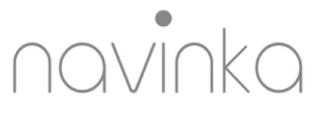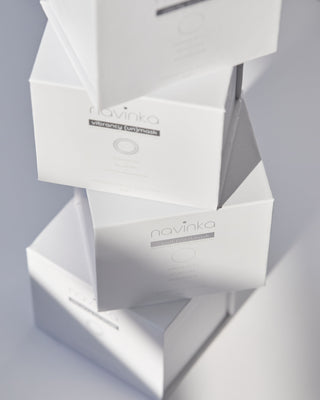So, you’ve come across a product online that looks quite interesting. Should you try it? Why not! But first, you want to study it in a little more detail. You click to see the list of ingredients and... boom, your brain explodes!
Well, not so dramatic, but it feels pretty much the same. Does this situation sound familiar to you? We bet it does!
So, how do you navigate through this list and know if the product has the potential to achieve the results you want?
Well, first you need a little info! This is why we’ve prepared this little guide, to help you face the scary ingredient list without fear.
Knowing how to read the list of ingredients can give you a direct insight into the composition of the product. Based on that, you will be able to conclude what you can expect from the product and whether what the manufacturer promises really makes sense.
Can I know exactly how a product will work based on ingredients list?
The important thing to keep in mind is that ingredients list is a vital factor, but not the only one when choosing a product. By understanding the ingredients, you can make an educated conclusion about the product’s potential.
But ultimately, the efficacy of a product will greatly depend on the individual characteristics of your skin. Theory is one thing and practice is another. Knowing the list of ingredients can narrow down your choice of products, and testing them will show if they are really the perfect match for your skin.
What ingredients should I focus on when reading ingredient’s list?
The first thing you need to know is that the ingredients on the ingredients list are ranked in descending concentration order. This means that in the first place you will find the ingredient whose concentration in the product is the highest, and that each subsequent one has a lower and lower concentration. The concentration of the last ingredient on the list is usually 1% or lower.
The first 5 or 6 ingredients together make up over 80% of the product. However, this does not mean that we should ignore others (we will explain why).
So, what to look for in these first 5-6 ingredients?
Don’t be surprised to see water as the top ingredient in many formulas. It is there to dissolve various beneficial water soluble ingredients, which would otherwise remain in their powder form. For instance, a popular ingredient such as hyaluronic acid comes in powder form and cannot be included in a formula without being dissolved in water.
Usually the bulk of the formula will be made of beneficial ingredients that carry moisture, softening effects and/or protection.
Look for ingredients that satisfy what you need the most at the moment. For example:
For hydration, you need to look for natural humectants, such as hyaluronic acid. Is it in the first 5-6? Is it high or low on the list? There are other effective humectants out there and, surprisingly, even alpha hydroxy acids can be moisturizing! If your skin needs extra moisture, then get to know humectants and look for them in the first 5!
For skin softening, you will be looking for natural emollients- like apricot kernel oil, glycerin, almond or olive oils. So if you’re experiencing rough skin, look for emollients in the top 5 ingredients.
For skin protection and moisture retention, look for occlusives, we recommend high quality oils or oil derivatives.
Does this mean that ingredients present in lower concentration are ineffective?
So, yes, ingredients are listed from largest to smallest percentage. But that absolutely doesn’t mean an ingredient can’t do its work at a smaller percent. Why? Because some ingredients are so powerful it takes less than 2% for them to work. That’s why you often see hydrocortisone 1% - there simply doesn’t need to be more.
These types of ingredients are often referred to as active ingredients, or an ingredient that has targeted functions.
Many active ingredients have optimal function at lower concentrations, so this is another thing to keep in mind when reading the list of ingredients. The fact that an active ingredient is at the end of the list is often a good sign, not a bad one!
For example, there is salicylic acid, whose effective concentration in skincare products is 2%, so even though you will find it at the end of the list of ingredients, you can expect its maximum effects.
Ok, so now you get the general idea, but how do you deal with the actual ingredient names and know exactly what they are.
You probably think "well, I know what water is, but what should I do with Haematococcus Pluvialis Extract". Before you give up on your research endeavor, we advise you to try another approach.
Let’s be real - you can look up anything in Google these days and know exactly where any unusual name comes from. And you can also now use super helpful websites like SkinSafe to see how the ingredients rate for either sensitive skin or their impact on the environment.
Another tool you can use to check skin care ingredients is EWG's Skin Deep Cosmetics Database. This cosmetic ingredient checker also offers some additional information about ingredients and products, such as information about the chemical, synonyms, potential concerns about the ingredient, and more. With the help of EWG, you will feel like a real chemist, even if you may have been very bad at chemistry in high school. You don't need significant prior knowledge, just a good will to learn something new about skincare ingredients.
So, if you type Haematococcus Pluvialis Extract, you will quickly realize that behind this ingredient with a complicated name, there is an algae extract that acts as an antioxidant. Piece of cake.
Also, sometimes you will come across some scientific names of ingredients that may sound weird, or even scary. For example, we will agree that Glycyrrhiza glabra does not sound harmless at all. However, just because something sounds toxic doesn't mean it really is. If you get a little informed you will find out that Glycyrrhiza glabra is actually just - Licorice root! Well, that’s not scary at all!
What is the main benefit of understanding skincare ingredients list?
Simply put, knowledge is power, so having it automatically puts you in a better position, no matter what the field is. The same goes for skincare. Ultimately, it’s good to know exactly what is going on your face and into the environment. You will agree that both of them are crucial to each one of us.
Keep in mind that not all formulas are created equal. Sometimes companies use fillers to bulk up the formula or to change its texture. It’s also common to see fragrances, dyes and harsh preservatives.
Certain manufactures and retailers go through a strict process of elimination before selecting products that exclude the above. This makes our life much easier, because we can relax and be sure that a certain product will not harm our skin.
However, in the end it’s up to the consumer to do their research and make the decision. You are the one who decides, so it is good to have all the important information and be able to make the best decision for yourself.
Final word
Although there is an infinite number of skincare ingredients, as well as the products themselves, it does not have to be a source of frustration. By applying some of our tips, you can choose the right product for yourself in just a few minutes. We suggest that you test a few cosmetics ingredients checkers and find the one you like best. This way you will always have help at hand when you are in a drugstore or shopping online and trying to figure out if that product with the phenomenal properties listed on the product label really has those properties. Or if its marketing went too far again. With a little knowledge and a few useful tools, you can find products that suit your skin and that you will enjoy for a long time.

